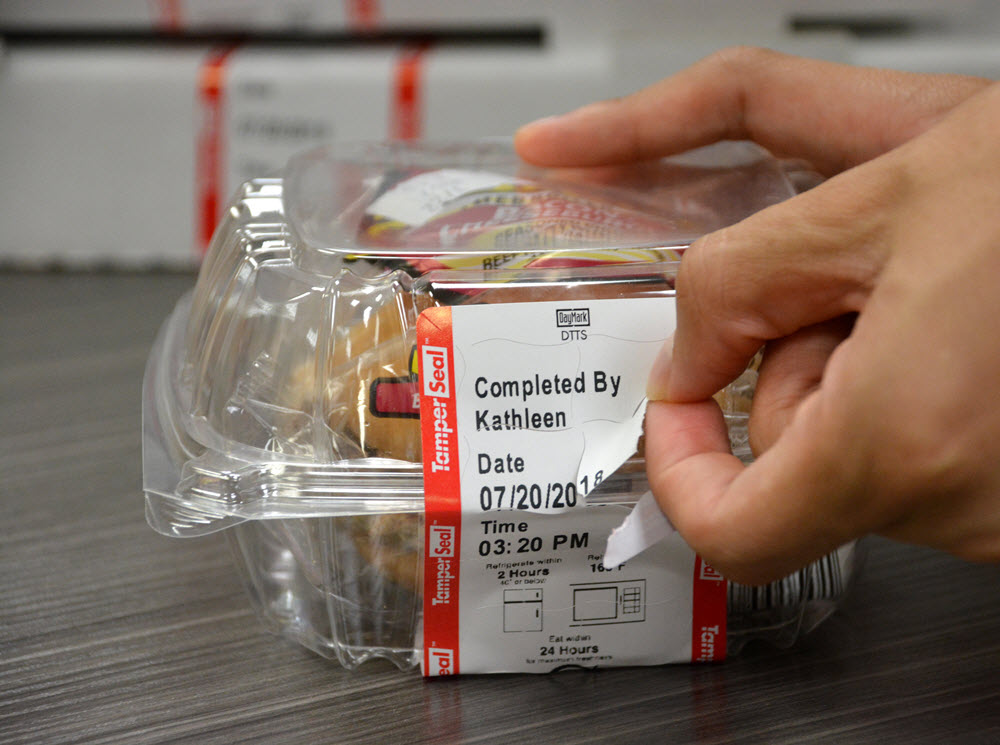The Answers to All of Your Tamper-Evident Delivery Labelling Questions
Posted on 5th May 2020
 With the surge in demand for third-party delivery due to the COVID-19 crisis, tamper-evident labels have taken on a more prominent role in the restaurant industry as the safety of delivered food is more important than ever.
With the surge in demand for third-party delivery due to the COVID-19 crisis, tamper-evident labels have taken on a more prominent role in the restaurant industry as the safety of delivered food is more important than ever.
Most restaurant operators and consumers alike are familiar with tamper-evident labels and seals. Everyday items such as over-the-counter drugs, food items, packaging materials, cleaning solutions and laundry products now often employ this method of security. Many manufacturers are now required to use these labels on their products.
Here are some key things to know about these labels:
What is a tamper-evident label?
As recognized by the Canadian Food Inspection Agency (CFIA), and per the United States Food and Drug Administration (FDA), a tamper-evident label or seal “is one having one or more indicators or barriers to entry which, if breached or missing, can reasonably be expected to provide visible evidence to consumers that tampering has occurred.”
What is the “visible evidence” that a tamper-evident seal provides?
This may vary by type and manufacturer. TamperSeal labels—manufactured by DayMark Safety Systems and approved for indirect food contact—pair an aggressive adhesive that works on packaging for both hot and cold food items with security slits that tear if someone attempts to open the container. This makes it visibly obvious the package has been opened.
Are tamper-resistant and tamper-evident labels and seals the same?
No, they are not—and this causes a lot of confusion. A tamper-resistant label is designed to deter tampering with a product. However, it does not necessarily provide visual evidence that a product has been tampered with.
A tamper-evident label, on the other hand, does provide visible evidence that a product has been tampered with if the seal is broken in any way.
Where can people expect to see more tamper-evident labels and seals in the future?
Consumers are most likely to see more and more tamper-evident labels and seals on food delivery products delivered from restaurants and other foodservice outlets. Recent news about delivery people helping themselves to the food they are in the process of delivering has helped fuel this, but the principal reason is that restaurants and foodservice outlets want to make sure the food they prepare for their customers is delivered intact and safe.
s there anything written on these labels?
Again, this can vary. However, with DayMark’s MenuPilot™ platform, tamper-evident labels can include information such as a company logo, a web address, safe handling instructions, date and time the food was prepared, marketing info, nutritionals and other customized information.
What is the key benefit of tamper-evident labels?
Safety and peace of mind. Especially when it comes to food delivered to a home or office, consumers want to make sure their food tastes good, is delivered within a reasonable amount of time and is safe to eat. Above all, they want to know that the food has not been tampered with in any way from the time it left the foodservice kitchen to the time it arrives at their door.
Article originally appeared on the Foodservice & Hospitality website.


